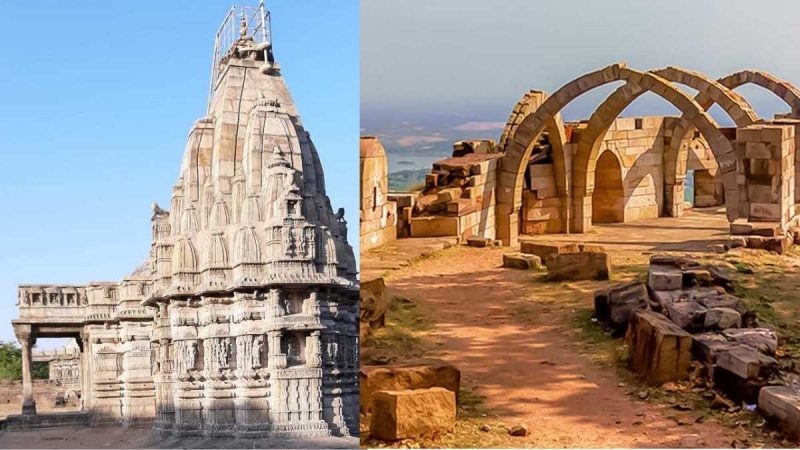Tucked away in Gujarat’s heartland, Champaner-Pavagadh Archaeological Park feels like a place where time has stood still. It’s no wonder UNESCO has recognized it as a World Heritage Site; Champaner-Pavagadh isn’t just another archaeological site—it’s a treasure chest of forgotten stories, resilient ruins, and timeless beauty.
A Glimpse Of Forgotten Grandeur
A historic town that was once at its most magnificent is located 49 kilometres from Vadodara. The magnificent Champaner-Pavagadh Archaeological Park, a UNESCO World Heritage Site since 2004, is in the town today. Imagine stepping into the remnants of a medieval capital—a place once a bustling trade hub, a city of palaces and mosques, and a pilgrimage site for Hindu devotees. Dating back to the 8th century, the area’s history stretches across multiple eras and empires, from the Chaulukyas to the Gujarat Sultanate. Today, walking through Champaner-Pavagadh feels like where the convergence of cultural influences gives each monument a distinctive flair.
The Champaner-Pavagadh Archaeological Park has eleven distinct building types, including walls, terraces, tombs, granaries, mosques, temples, and wells. The stone pathways, weathered yet resilient, lead you through a landscape that feels almost enchanted. Champaner’s isolated location has preserved it from the crowds, leaving its charm intact for the modern traveller willing to explore its hidden corners.
Architectural Gems To Look At
There’s something uniquely mesmerising about the ruins of Champaner. The stone pathways, weathered yet resilient, lead you through a landscape that feels almost enchanted.
Champaner is located at the base of the 800-meter-tall Pavagadh Hill, one of India’s oldest rock formations and is made up of reddish-yellow stone formations. The oldest temple in this area was built in the tenth or eleventh century and is devoted to Shaivite revivalist Lakulisa. Other temples, which date from the 13th to the 15th century, are associated with the Hindu and Jain religions. One of the most spellbinding sights in the park is the Jama Masjid, a mosque that still stuns visitors with its grandeur. Unlike any mosque you’ll find in India, Jama Masjid reflects the very soul of Champaner-Pavagadh’s Indo-Islamic design.
One of Gujarat’s most important Shakti Peethas, the Kalika Mata shrine, is the most visited shrine on the hill. It contains three pictures of goddesses: Bahuchara Mata is on the left, Kalika Mata is in the centre, and Kali is on the right.
Champaner-Pavagadh Archaeological Park is more than just ruins. It’s a journey into the heart of India’s medieval past. So, when are you visiting?
Cover image credits: Wikimedia Commons

